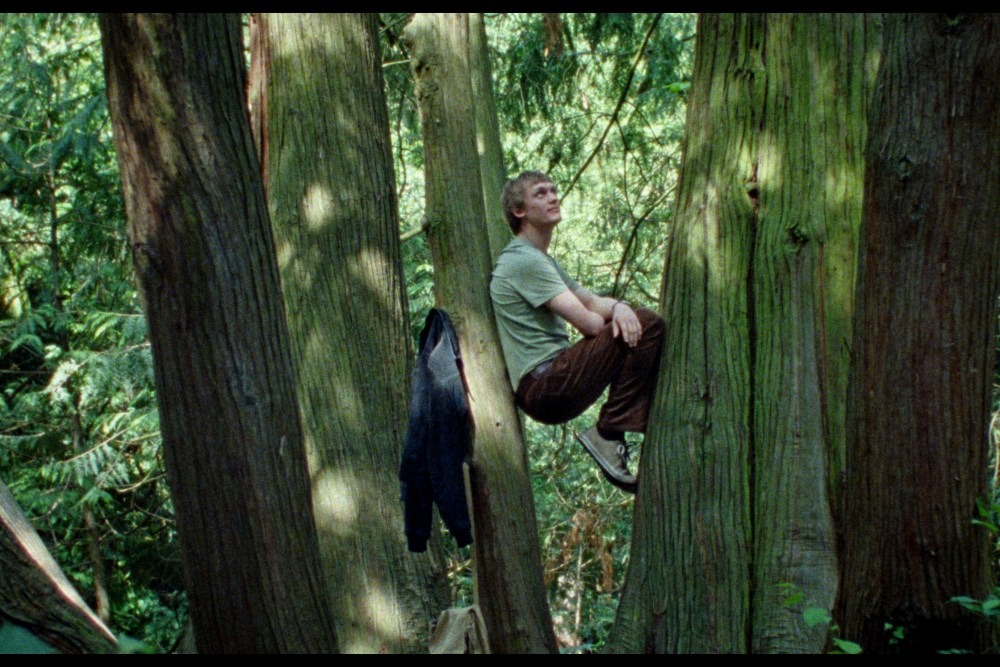Hungarian filmmaker Ildikó Enyedi’s Silent Friend is a two-and-a-half-hour arthouse film that weaves three stories together about science, nature, and humanity. It’s not easy to sit through 150 minutes, but with a little patience and an open mind, audiences will be rewarded.
Silent Friend is an entrancing experience best enjoyed when you sit back and let it wash over you. Enyedi knows how to create a visual experience, mixing poetic dialogue, deadpan humor, and a calming soundtrack.
Three Timelines and Their Botany Connection
The film takes place at a German university over three time periods and two centuries. The connection between these stories is more metaphysical than narrative. The first story takes place in 2020, as neuroscientist Tony (the ever-charismatic Tony Leung) gets trapped on campus during the COVID-19 pandemic lockdown. Unable to conduct the research he was hired for, which tested children’s brainwaves, he replaces the small kids with an old gingko tree.
This portion of the film is the best of the three, and this is a testament to Leung. The actor is so charming that it’s a delight to watch him do even the most mundane activities. During the global lockdown, he forms a friendship over video call with fellow scientist Alice Sauvage (Léa Seydoux). It’s one of the best representations of the pandemic caught on camera, perfectly summing up the joy people found in indulging in banality.

The earliest plotline in Silent Friend follows the school in the early 1900s. This thread, which is probably the most redundant, follows Grete (Luna Wedler), a brilliant scientist whose academic career is thwarted by the era’s treatment of women in the workplace. It’s the story that makes the least sense in the grand scale of the themes within Silent Friend.
The last thread takes place in the 1970s and follows Hannes (Enzo Brumm) as he tries to woo Gundula (Marlene Burow) by helping her run experiments on her geranium. The plot initially appears to be about a young romance between two hippie students on campus. When Gundula leaves, the plot switches into a delightfully quirky tale about a man bonding with a surprisingly charismatic flower on a windowsill.
The 2020 and 1972 timelines speak gently to each other. Both explore how curiosity and kindness can be the foundations of nonverbal relationships. Both also directly connect humanity and botany, linking the roots of a tree with the human brain. The 1908 timeline forces this conversation to come to a grinding halt. The lightness of the other two chapters turns into something stiffer and slower paced.

Everything Changes Except Nature
Silent Friend smoothly moves through the three threads, cutting between them without rhythm or reason. The film is best enjoyed when you just sit back and let it ebb and flow through the different timelines. Silent Friend is a film to feel and sink it, rather than overthink.
The true connector of the different chapters is the giant ginkgo tree. While the world around it changes, not always for the better, this tree stands still. When humanity stops due to war, protests, or pandemics, the tree still thrives (perhaps even more so). Whether Enyedi is trying to highlight the power of nature or the fragility of humanity depends on the point of view of the audience.
The film is less concerned with writing complex story arcs filled with layered characters and instead concentrates on exploring the connection between humans and nature. Each story and character is painted with broad brushstrokes, which allows the audience to drop quickly in and out of their lives.

The real skill of Silent Friend is the loving craftsmanship behind the film. Enyedi and her DOP, Gergely Pálos, frame the characters in wide shots, so they look small amidst the looming nature surrounding them. The director uses botany as a supporting character, using natural light and shadow to create the mood. No matter what is happening to the characters, the tree is always at the centre of the proceedings. Gabor Keresztes and Kristóf Kelemen’s ethereal score adds an otherworldly quality to the tale, mirroring the mystery of the botany we share our planet with. Altogether, the technical crafting of Silent Friend helps create a calming piece of filmmaking that combats the loud, bombastic nature of modern cinema and forces the audience to contemplate the world around them rather than their own relatively insignificant life.
Silent Friend is a film that frequently suffers from being pretentious and self-indulgent, but it also creates a meditative experience thanks to the restraint rarely shown in modern cinema. The runtime could have been significantly cut down and still had the same effect, but Enyedi is more interested in creating an atmosphere than a plot which takes characters on a wild journey.
Like a good gardener, Silent Friend demands patience. You’ll walk away contemplating your own place in the greater scheme of things and reconsider how botany plays a larger role in society.
For more Reviews, make sure to check back to That Hashtag Show.

![Silent Friend- A Mediative Anthology About Humanity’s Connection To Botany [Review]](http://18.211.146.234/wp-content/uploads/2025/11/ca62d6e1-e0a3-4e1e-8edc-8aec4ef72f76-1280x640.jpg)
![Mighty Morphin #20: Trading Spaces [Review]](http://18.211.146.234/wp-content/uploads/2022/06/284346391_700484017945706_5890102789100209270_n-440x264.png)
![Shudder’s ‘Perpetrator’ Delivers a Horror-Noir Dripping In Blood [Review]](http://18.211.146.234/wp-content/uploads/2023/08/370623709_330043499377965_2751219778833680340_n-440x264.jpg)

![Shotgun Wedding: A Rocky Start Saved By A Fun Premise [Review]](http://18.211.146.234/wp-content/uploads/2023/01/Shotgun-Wedding-review-440x264.png)